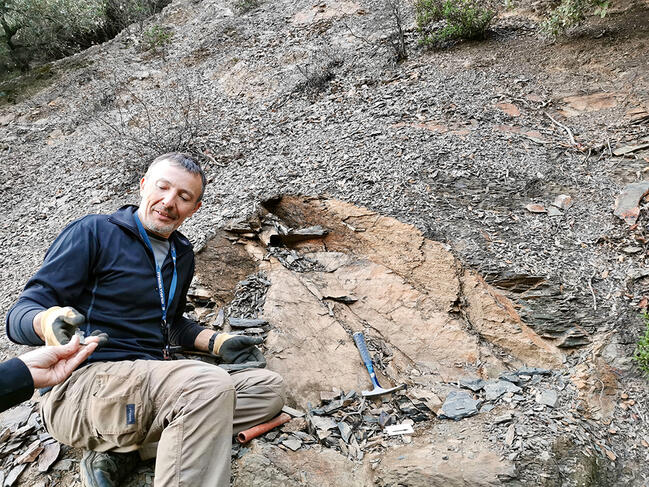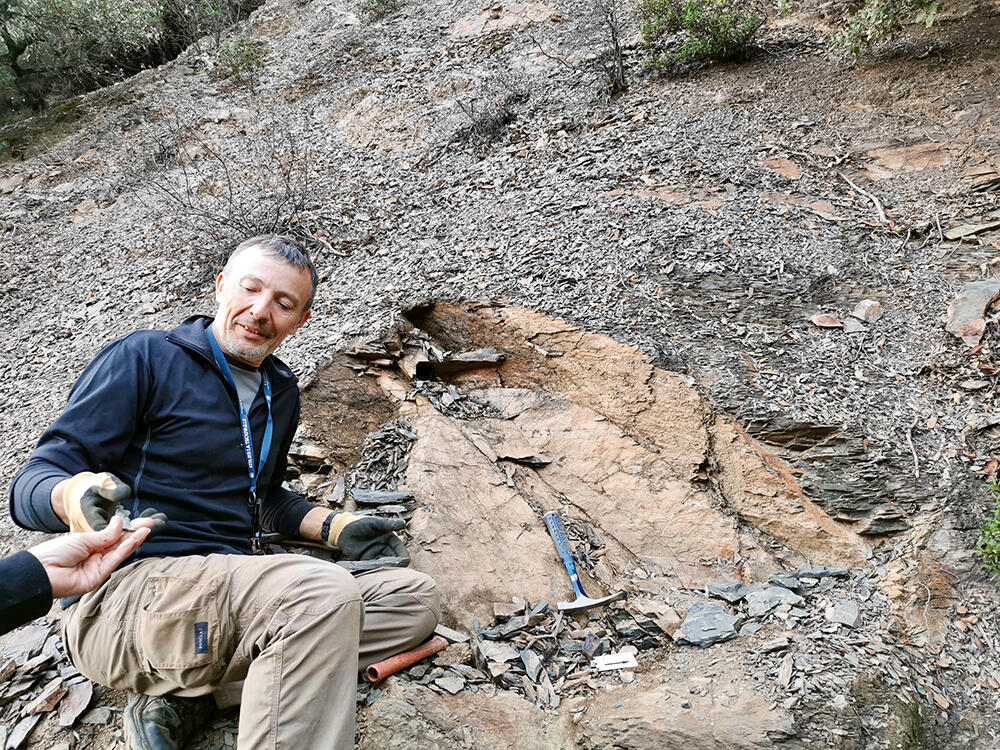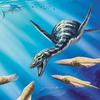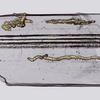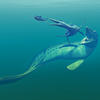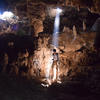You are here
Rare Ordovician fossil deposit found in France
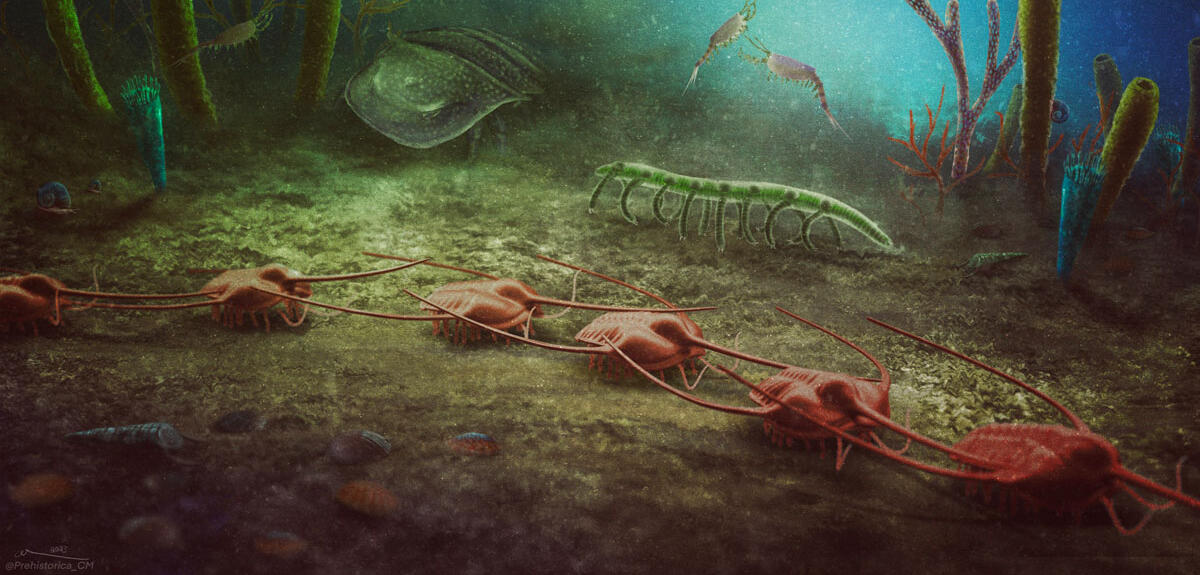
In the southeastern Canadian Rockies, the animals of the Burgess Shale are internationally renowned in palaeontology circles. These mountainside fossil deposits provide unparallelled evidence of the Cambrian explosion, a sudden, massive proliferation of animal life in the world's oceans that took place over half a billion years ago. But on this side of the Atlantic, another fossil bed is poised to become as famous as its North American counterpart. In 2018, Cabrières, a village in the southern foothills of the Montagne Noire range (southern Massif Central) was the setting for an exceptional discovery: a vast assemblage of fossilised species dating from the Lower Ordovician (485 to 470 million years ago), the geological epoch that immediately followed the Cambrian (- 541 to - 485 million years ago).
The very first fossils were unearthed by Éric and Sylvie Monceret, a couple of amateur palaeontologists who have explored the geological outcrops of the Minervois region for many years. In the weeks preceding their finding on the slopes of a wooded hill a few kilometres from Cabrières, Eric Monceret was taking part in a scientific mission in the Anti-Atlas range in Morocco.
"There is little doubt that this excavation campaign helped the Moncerets to become familiar with the exceptionally well-preserved palaeofauna of the Lower Ordovician, of which the Fezouata geological formation is one of the most remarkable examples," says Bertrand Lefebvre, a CNRS researcher at the LGL-TPE1 who has directed several field studies in the region.
An exceptional fossil deposit
Like Fezouata, Cabrières is classified as a "Konservat-Lagerstätte". In palaeontology, this term of German origin refers to especially well-preserved fossil deposits. "Such assemblies contain not only the hard parts of animals, such as arthropod skeletons and bivalve shells, but also soft organic parts that sometimes appear in the rock as imprints," Lefebvre explains. "Unlike typical deposits, which are made up solely of mineralised remains, a conservation Lagerstätte provides a very good overview of the original structure of communities of species."

Deposits of this kind account for barely 1% of fossil sites worldwide, and only a handful of them provide evidence of the fauna and flora of Lower Ordovician marine ecosystems. This highlights the scientific importance of the Cabrières deposit, confirmed by the excavation campaigns carried out since 2018, which have already led to the discovery of more than 400 fossils ranging in size from a few millimetres to several centimetres2.
"In addition to early arthropods such as trilobites, brachiopods, cnidarians and gastropod molluscs, all of which are found in the Fezouata geological formation, the Cabrières biota is characterised by an abundance of large sponges and branched algae," says Christophe Dupichaud, a doctoral student at LGL-TPE who took part in the latest field study at the site, in October 2023.
In the vicinity of the South Pole
The presence of large numbers of sponges and macroalgae at Cabrières suggests that the region was located at high latitudes during the Lower Ordovician. Due to the action of plate tectonics, what is now the Hérault department in the south of France was then very close to the South Pole, at a time when the Earth was undergoing a phase of intense warming that had begun in the Late Cambrian, and average ocean temperatures were some 15 °C higher than today.

The biodiversity observed in the Cabrières deposit lends further weight to the hypothesis that there was no large-scale extinction of species towards the end of the Cambrian period, but rather isolated die-offs in the ocean areas most impacted by warming, such as the tropical and temperate regions. "As the poles were less affected by rising temperatures, they may have served as a refuge for the animals and plants that were able to migrate to these high latitudes," Dupichaud adds.



Thanks to collaborations with researchers from the Swiss University of Lausanne's Institute of Earth Sciences and from Université Paris-Saclay, some of the fossils collected in the Montagne Noire have been examined using cutting-edge technology. The surfaces of five specimens of bivalve arthropods were examined using a state-of-the-art scanning electron microscope, while another two samples containing bivalve arthropods, brachiopods and sponges were also studied in depth using the SOLEIL synchrotron.
"The analyses enabled us to determine the geometry of the iron crystals present in the fossils, confirming that an extremely rapid fossilisation process caused the mineralisation of certain soft tissues in these organisms," Dupichaud explains.
Putting the fossilisation process into context
In addition, despite successive excavation campaigns, the scientific team discovered that some groups of animals typical of the Ordovician period were almost entirely absent from the Cabrières deposit. This is particularly true of echinoderms, of which there are only five specimens, even though they make up two thirds of the taxa identified at the Fezouata site.
This under-representation could be related to an excessive concentration of nutrients in the water column. For echinoderms thrive in nutrient-poor oligotrophic environments, but are unable to compete with other species when nutrient resources are abundant.
For Lefebvre, the scarcity of echinoderms in the Cabrières biota could also be due to the fact that they were located in the marine environment when the fossilisation process began: "Knowing that eocrinoids, which make up the majority of echinoderms at the Fezouata site, are found either near the shore or at a depth of around a hundred metres, which has been confirmed for the Moroccan deposit, the Cabrières biota may have been located at an intermediate depth, in a kind of no man's land where eocrinoids aren't usually found."
The next excavation campaign, planned for April, should shed some light on this puzzle. For two weeks, some fifteen researchers including palaeobiologists, geochemists and sedimentologists will be taking it in turns to work at the Cabrières site. Their job will be to collect as much in situ data as possible in order to reconstruct the environment in which this unique community of species lived, while attempting to understand the circumstances that led them to be trapped in the marine sediments of the Lower Ordovician for all eternity. ♦
Further reading on our website
Quand la vie animale s’est diversifiée (When animal life diversified). In French.
- 1. Laboratoire de géologie de Lyon : Terre, planètes, environnement Laboratoire de géologie de Lyon : Terre, planètes, environnement (CNRS / ENS Lyon / Université Claude Bernard Lyon 1).
- 2. “The Cabrières Biota (France) provides insights into Ordovician polar ecosystems”, Farid Saleh et al., Nature Ecology and Evolution, 9 February 2024.
Explore more
Author
After first studying biology, Grégory Fléchet graduated with a master of science journalism. His areas of interest include ecology, the environment and health. From Saint-Etienne, he moved to Paris in 2007, where he now works as a freelance journalist.


